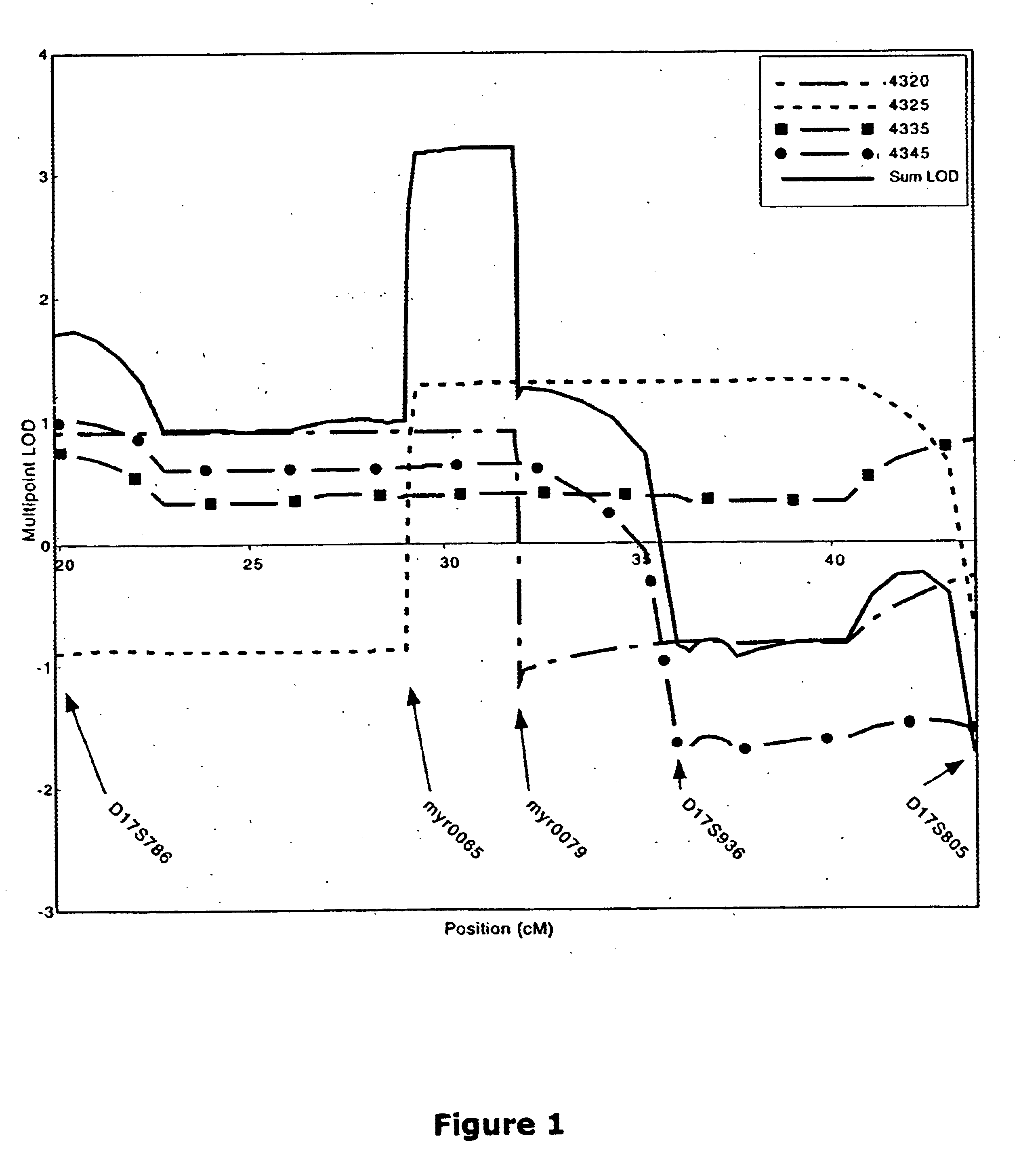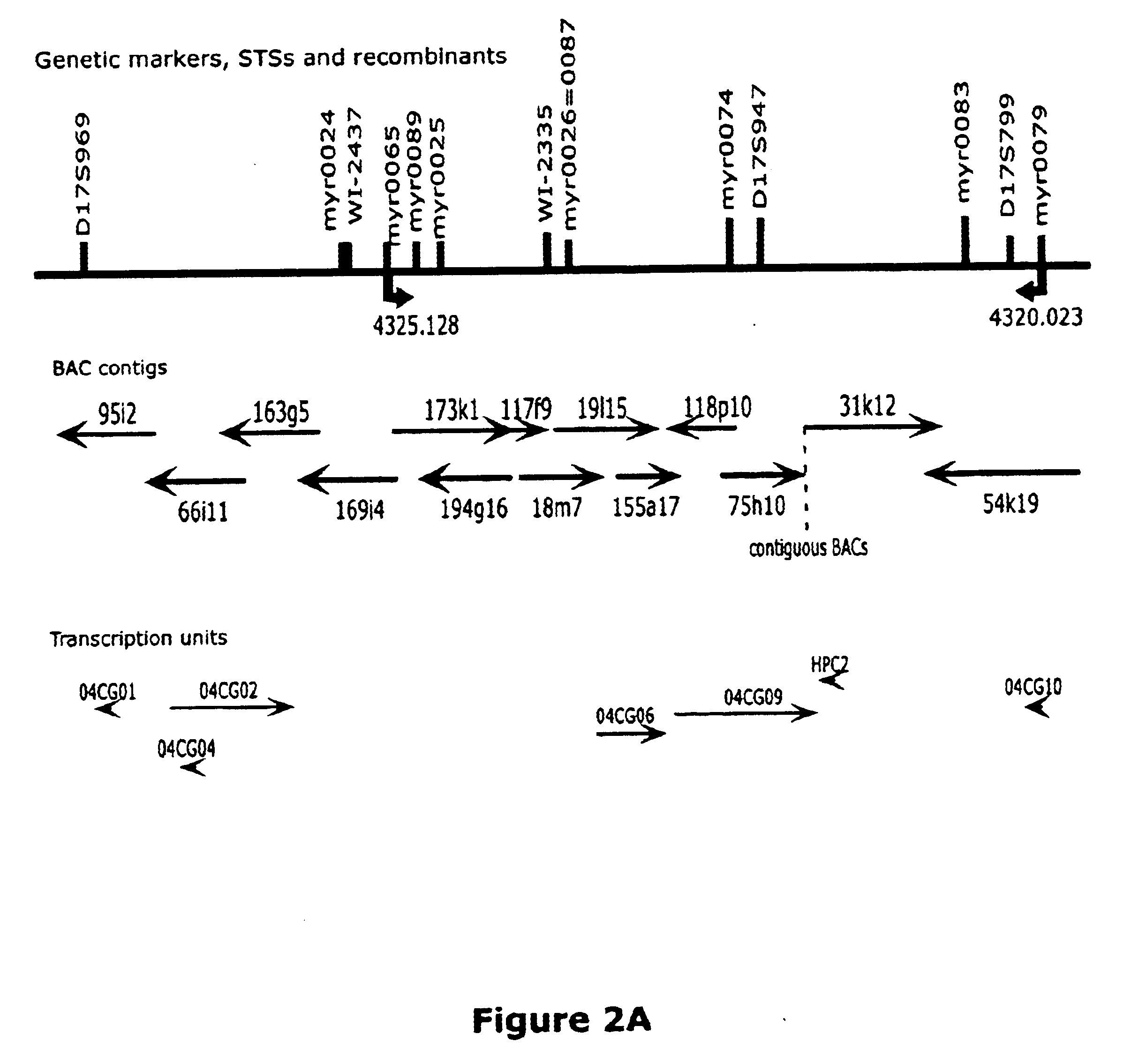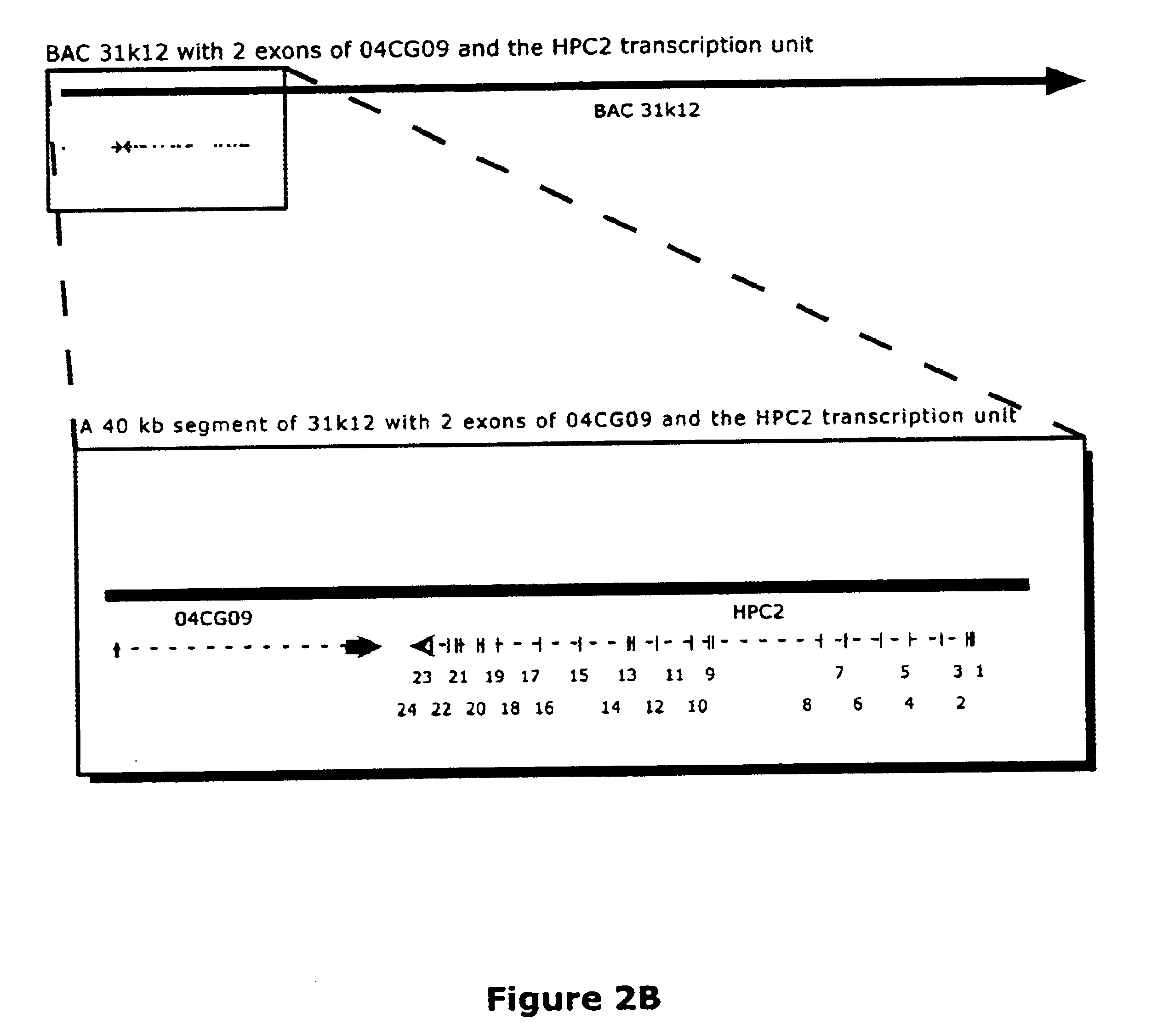Chromosome 17P-linked prostate cancer susceptibility gene
- Summary
- Abstract
- Description
- Claims
- Application Information
AI Technical Summary
Benefits of technology
Problems solved by technology
Method used
Image
Examples
example 1
Genetic Localization of HPC2
[0215]A set of high risk prostate cancer kindreds has been collected in Utah since 1990 for the purpose of localization of prostate cancer susceptibility loci. In February 1996, linkage analysis of data from a genome scan performed on a subset of the families noted evidence for linkage with markers on chromosome 17p. Subsequent analysis of more markers in this region of chromosome 17p in a larger set of families has led to strong linkage evidence for a susceptibility gene.
TABLE 1Chromosome 17p two-point linkage evidenceMarker17p map positionHeterogeneity Lod ScoreD17S78620.04.21Myr 002225.53.99Myr 008827.03.46D17S94731.62.32Myr 008431.93.02Myr 007932.00.99D17S80543.62.25
[0216]The study of specific kindreds with strong evidence of linkage to chromosome 17p allows the definition of a most likely region for the susceptibility locus by identifying the smallest inherited piece of chromosome 17p shared by the prostate cancer cases in the kindred. The minimal ge...
example 2
Contig Assembly and Genomic Sequencing in the Minimal Genetically Defined HPC2 Region
[0217]Contig assembly. Given a genetically defined interval flanked by meiotic recombinants, one needs to generate a contig of genomic clones that spans that interval. Publicly available resources, such as the Whitehead integrated maps of the human genome (e.g., the WICGR Chr 17 map) provide aligned chromosome maps of genetic markers, other sequence tagged sites (STSs), radiation hybrid map data, and CEPH yeast artificial chromosome (YAC) clones.
[0218]Oligonucleotide primer pairs for the markers located in the interval were synthesized and used to screen libraries of bacterial artificial chromosomes (BACs) to identify BACs in the region. The initial set of markers used was D17S969, WI-2437, WI2335, D17S947, and D17S799 (FIG. 2A). BACs identified with these markers were end-sequenced. PCR primers designed from those end sequences were used as markers to arrange the initial BACs into contigs. The oute...
example 3
Sequence Assembly of the Human HPC2 Gene
[0221]A BLAST search of genomic sequences from BAC 31k12 against dbEST identified two independent sets of human ESTs that, when parsed across the BAC 31k12 genomic sequences, revealed the presence of two independent multi-exon candidate genes, 04CG09 and the HPC2 gene (FIG. 2A). A subset of the EST sequences assigned to HPC2 (Table 2) was assembled to produce a tentative partial cDNA sequence for the gene.
TABLE 2Human ESTs used to assemble atentative partial human HPC2 cDNA sequenceEST Accession #Exon SpanAA6796181→6Z178864→8W37591 7→12AA31023612→16R5584115→19T3421618→21AA63490920→24AA50441223→24R4279524→polyA
[0222]The individual exons of the human HPC2 gene were identified by parsing that tentative cDNA sequence across the BAC 31k12 genomic sequence (see schematics in FIGS. 2D and 2E). After we had identified the HPC2 gene, the MIT genome sequencing completely sequenced another BAC, 597m12, that also contains all of the exons of HPC2 (Genbank...
PUM
| Property | Measurement | Unit |
|---|---|---|
| Mass | aaaaa | aaaaa |
| Mass | aaaaa | aaaaa |
| Mass | aaaaa | aaaaa |
Abstract
Description
Claims
Application Information
 Login to view more
Login to view more - R&D Engineer
- R&D Manager
- IP Professional
- Industry Leading Data Capabilities
- Powerful AI technology
- Patent DNA Extraction
Browse by: Latest US Patents, China's latest patents, Technical Efficacy Thesaurus, Application Domain, Technology Topic.
© 2024 PatSnap. All rights reserved.Legal|Privacy policy|Modern Slavery Act Transparency Statement|Sitemap



